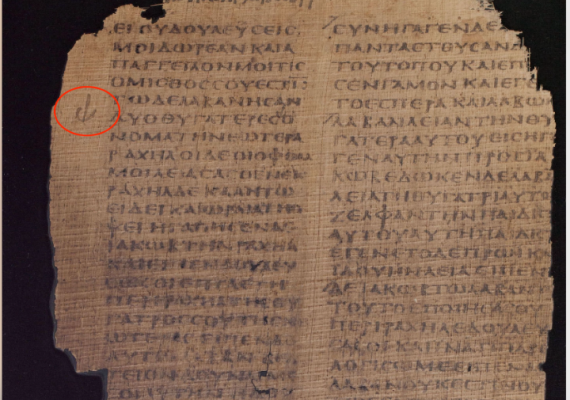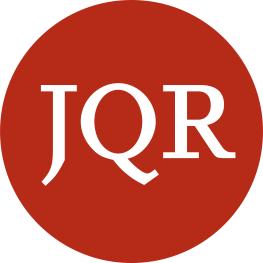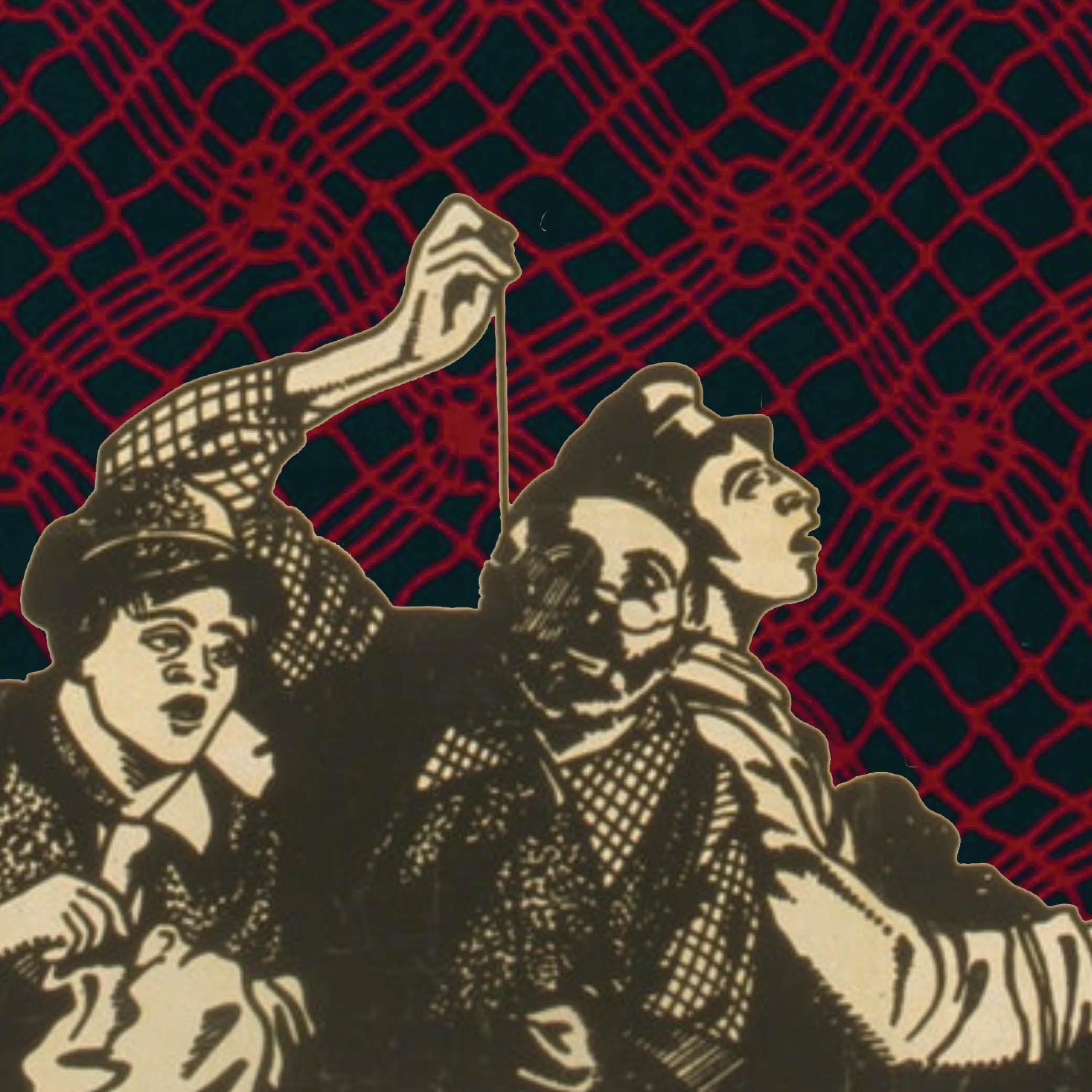Marginalized
Finding history in the marginal notations of manuscripts.

Ancora, Septuagint to Genesis (Egypt, 4th c. c.e.). Dublin, Chester Beatty Library, BP IV f. 24.
What does one learn when we avoid the gravitational field of a book’s content in favor of all the bits of history preserved in a book’s form? There is a rich tradition of studying books as material objects, and indeed there is much to learn from books as books, from the technology and economics of the book trade, to the ways knowledge is shaped or altered by page layout, to the ways the circulation of ideas may be subject to such apparently secondary factors as trade routes or family networks. How, for example, do books support a culture of experts from censors to font designers? And on manuscript pages themselves, what does handwriting reveal? The amount of space left blank? The style and placement of illuminations or illustrations? And I’ve only scratched the surface of things about a book that may open worlds of information to the attentive historian.
In a scholarly note in the latest issue of JQR, Joel Binder and Mordechai Weintraub move us into the realm of material book studies by focusing our attention to the margins of manuscripts. “DaKH: On One Reference Sign in Medieval Hebrew Manuscripts.” They are fascinated by the marginal glyphs, which, in their turn, draw a reader’s attention to other signs that alert the reader to textual emendations and omissions, or other information regarding the text itself.
Manuscript margins, in other words, preserve networks of signs that expose a culture of textual precision and hyperawareness—all while manuscript production is prone by nature to mistakes. In fact, error and accuracy are dance partners in the production of literary and religious manuscripts. Hebrew manuscripts preserve a variety of such signs, among them circles, stars, dashes, and dots. Not only are readers and copyists’ eyes trained to read these marginal signals (signes de renvoi) so as to receive the best possible text, but Binder and Weintraub see in these marginal notes in Hebrew manuscripts evidence of scribal and reading cultures that far exceeded regional, temporal, and generic boundaries.
Binder and Weintraub focus their scholarly note on one such sign, the DaKH (the pairing of a dalet and a final kaf—see the essay itself for images). Though a common sign, seen in Hebrew manuscripts “from the tenth century up to the eighteenth and […] in almost every Jewish geographical region, in the Middle East and across Europe,” it is still unusual among Jewish manuscript notes in that it is a combination of letters. What the letters indicate is uncertain, even among many of its users, but it function was most often to signal textual omissions.
The essay tells us everything we know about this sign and where it can be found, and ends with a tantalizing observation: namely that the DaKH bears uncanny resemblance to an anchor shaped sign with an identical function familiar from much earlier Greek and Latin papyri and manuscripts, dating to as early as the first century b.c.e. They leave this suggestive observation mostly unanalyzed, but it prompts us to see how even the dustiest bit of antiquarian knowledge—marginal symbol expertise!—has the potential to throw some light into the dark gaps not only in the texts of manuscripts themselves but onto what we know about manuscript transmission, knowledge transfer between classical and Jewish literatures, and the possible transnationalism of literary expertise.


